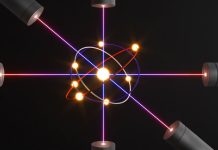Christine M. Cunningham, Professor at The Pennsylvania State University, discusses engineering solutions for children to help solve ecological problems
Students need to understand how engineered technologies come to be created through better engineering solutions. This includes not only engaging with engineering concepts, practices, and processes, but also reflecting upon how engineering impacts people, communities, and the environment.
Children are natural engineers – they stack blocks, construct forts from pillows and blankets, and design habitats for their dolls or pets. To nurture such problem-solving proclivities, educational spaces should provide opportunities for children to learn about the human-made, or engineer, world they inhabit. Engineering shapes the world we live in – clean water, safe food, strong buildings, instant communication, and cutting-edge medical devices are all products of engineering.
Engineering, science, and mathematics concepts intertwine. Using scientific and mathematical knowledge and tools to solve authentic engineering problems that invite original solutions can motivate students and help them learn disciplinary content. High-quality, intentionally designed, experiences and curricular materials promote such interdisciplinary learning.

Youth Engineering Solutions
Youth Engineering Solutions (YES) aims to help educate the next generation of problem solvers and engineers by developing equity-oriented, research-based engineering and STEM curricular resources for K–8 youth and their educators.
YES, curricular units integrate with commonly taught life, physical, and earth science concepts and are anchored by an equity-oriented model for engineering learning. As they work collaboratively to design innovative solutions to real-world problems, students use engineering, science, and computational thinking ideas and practices. YES aims to empower all students, particularly those from populations underrepresented in STEM, to develop engineering proficiency and confidence, which build their engineering and problem-solving identities.
Engineering challenges can integrate with life science and ecology concepts. For example, in the YES Engineering Pumpkin Pollinators unit, students ages 6–8 learn about the life cycles of plants and pollination they are introduced to an engineering problem and asked to generate original solutions.
The next sections describe how students use socially engaged engineering and an engineering design process to address the challenge.
Socially engaged engineering
Youth need to understand how engineering connects to their lives, communities, and cultures. Socially engaged engineering design centres on real-world problems. It also helps students recognise that a range of stakeholders (including people, animals, and the environment) benefit or are harmed by engineering solutions. Through such work, students develop empathy and perspective-taking as well as more robust solutions.
In primary grades, YES uses a short, illustrated story to introduce engineering. The Pollinator’s story features two farm children, Jake and Alex. They worry that due to their declining pumpkin crop they will not have a pumpkin for the annual fall festival.
They identify a decrease in the bee population as a possible cause – flowers that are not pollinated do not bear pumpkins. Jake and Alex solve the problem by engineering a hand pollinator that moves pollen from flower to flower. After reading the story, classroom students will also design a pumpkin pollinator.
A systematic problem-solving approach – the engineering design process
The characters also model a problem-solving approach—the engineering design process—that students also use to structure their work.

In the Ask phase, students deepen their understanding of the problem and related scientific and engineering concepts. For example, in the Pollinators unit, students explore how biological systems function. How do bees help plants produce fruit? Why is a decline in the number of bees problematic? Why are bees good pollinators for pumpkins?
Structured activities help students construct these critical understandings. In one lesson, students assemble a life cycle/pollinator puzzle and think about the effects if one step is missing. In a subsequent lesson, students act as bees to pollinate pumpkins. As sickness strikes their colony, they record data to observe that fewer bees mean less pollination which results in fewer pumpkins. Finally, students consider the actions of pollinators and the shape of pumpkin flowers to identify attributes of good pumpkin pollinators.
Students use this knowledge to inform the design of a hand pollinator that mimics bees’ pollination strategies. They identify criteria and constraints their device must meet. For example, it must pick up and drop off pollen, preferably to multiple flowers.
They investigate the materials available for their designs – pompoms, erasers, toothpicks, straws, pipe cleaners, feathers, marbles – to determine which is best at moving pollen (modelled with baking soda). They Imagine several possible solutions to the problem. In pairs, students Plan a design and sketch it. Then they Create and Test it to see how well their pollinator functions to transfer pollen from flower to flower. Using the data they collect, they iteratively Improve their solution.
Engaging students in such real-world, hands-on engineering solutions, which draw on science knowledge, results in better student learning outcomes for both engineering and science learn- ing. As they use science and engineering to address challenges related to their lives and the environment, students also deepen their understandings of the interconnectedness of disciplines and develop problem-solving skills.
This work is funded in part by the National Science Foundation Grant #205434 and The Pennsylvania State University.
Please note: This is a commercial profile
© 2019. This work is licensed under CC-BY-NC-ND.











